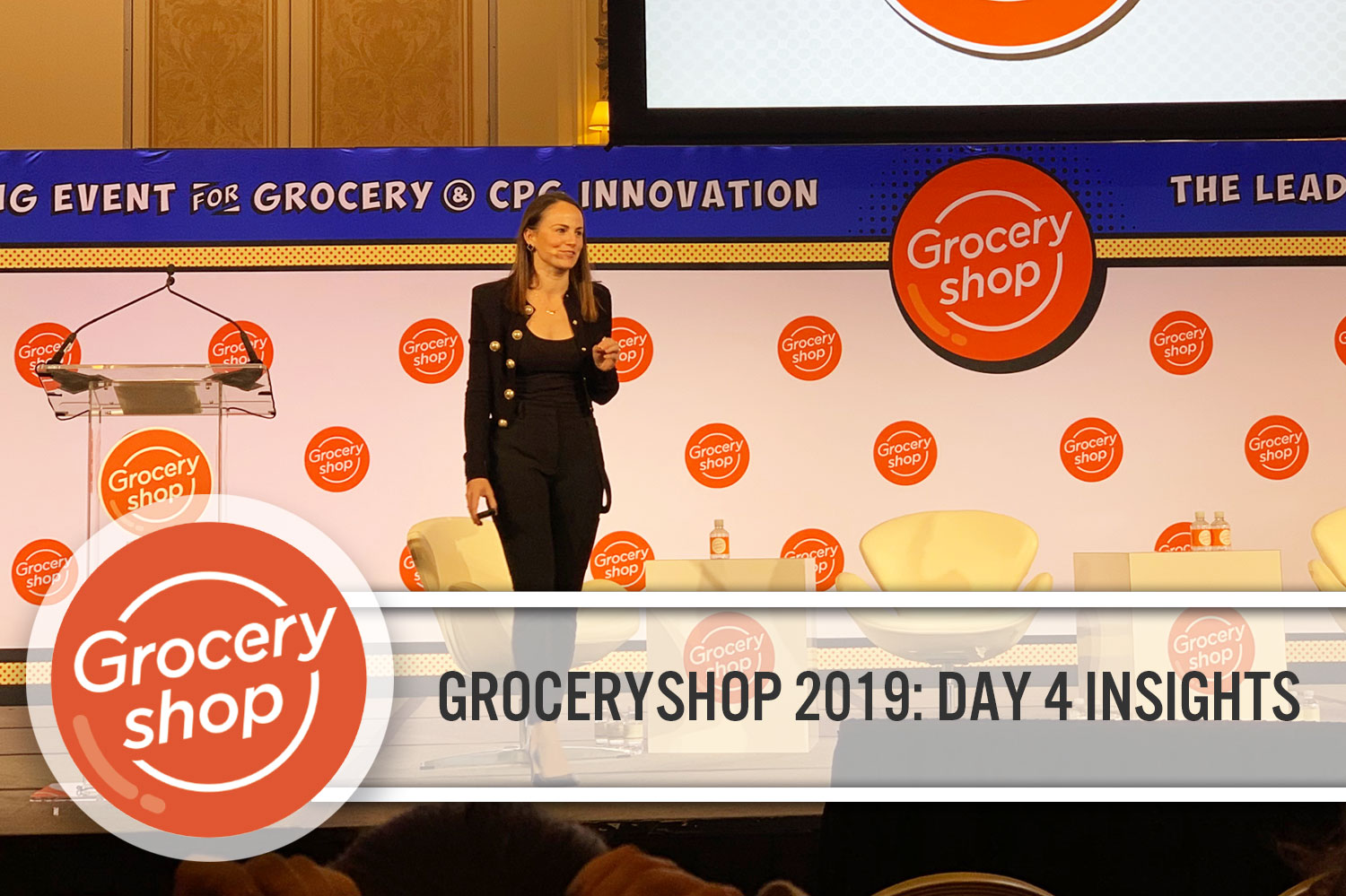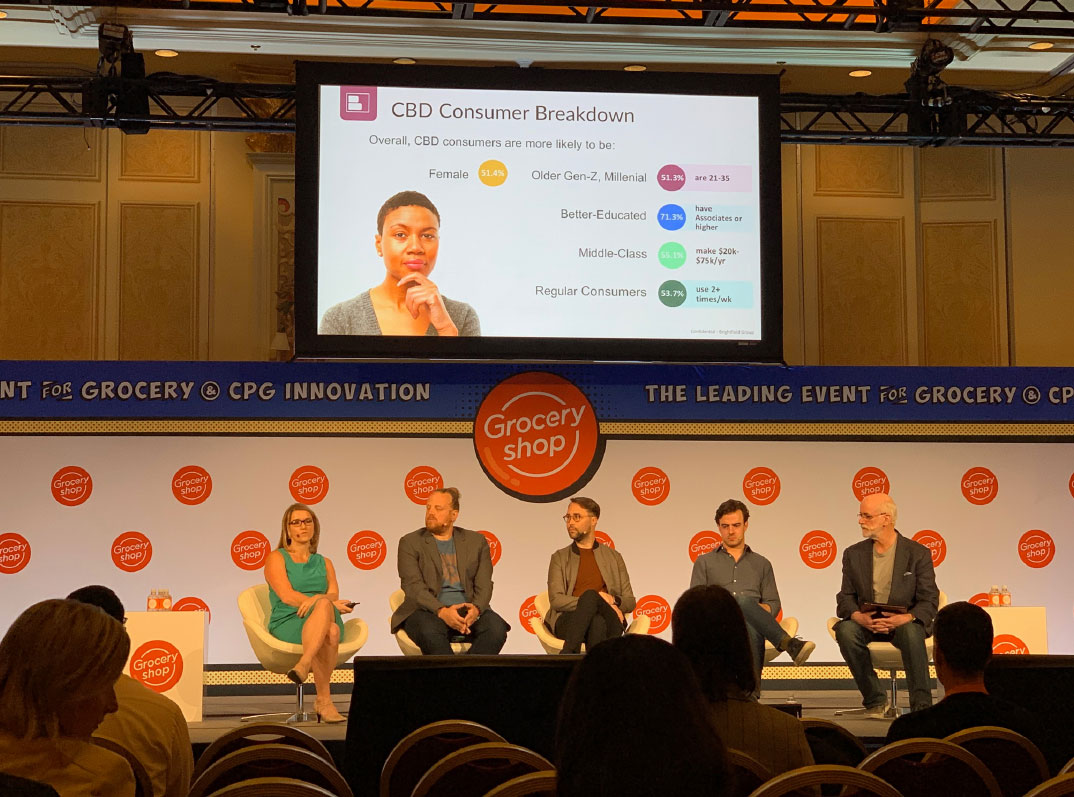
DIpil Das
The Coresight Research team has been in Las Vegas this week, attending and participating in the Groceryshop 2019 conference, which ran September 15-18. The conference brought together over 3,000 attendees and more than 200 speakers talking about the transformation of the retail industry, shifts in consumer behavior and innovations that are helping retailers keep up with fast-changing consumer expectations.
Key themes this year include the transformation of retail across convenience stores, supermarkets and e-commerce, and changes in production and distribution processes in CPG across multiple verticals. Participants are also talking about the rapid shifts in how today’s consumer discovers, shops and buys; how they use new technologies; innovative retail business models; and, the latest trends in consumer behavior, preferences and expectations.
Below we note key insights from the last day at Groceryshop 2019.
CBD’s Surging Popularity Set to Increase
The market for CBD has been growing significantly in recent years – and after the US Congress passed a law in December 2018 that clarified its legal status, it is now legal for retail sale in all 50 states. The legislation (the Agriculture Improvement Act of 2018) also allows the transfer of legally-produced hemp or hemp-derived products across state lines.
We believe product innovation will continue in this sector and fuel ongoing sales growth.
CBD is an active ingredient found naturally in the cannabis sativa plant, the same plant that contains tetrahydrocannabinol (THC), a psychoactive compound that produces intoxication. Like many plants, cannabis sativa has different varieties, some are high in CBD but low in THC, others are high in THC but low in CBD – and plants are found along the entire spectrum. The challenge for brands wanting to use CBD as an ingredient in product formulations was they were not clear whether CBD was legal under federal law.
The Agriculture Improvement Act of 2018 clarified that by defining any cannabis sativa plant with less than 0.3% THC as “hemp” and any with more as “marijuana,” making hemp legal in all states but retaining the federal government’s complete ban on marijuana in all forms.
This provided much-needed relief for brands looking to tap into this fast-growing segment but nervous about the legal implications. It also helps companies explain the difference between the two to educate consumers.
With the market growing, distribution channels are also expanding, and contrary to the belief that CBD products are sold in mom-and-pop stores, chain retailers are in fact the leading channel with more than half the market.
The only unknown: Will the FDA step in with its own set of regulations now that CBD will make its way into more products – especially products people may eat. Some CBD companies have been preparing for this possibility by conducting their own research.
One important aspect is to ensure staff are trained to educate customers, especially as this is such a new category and there is a lot of unverified information (especially related to claims of benefits that may not have been demonstrated through clinical trials).
Keep an eye out for an upcoming Coresight Research report on CBD to be published next week.
[caption id="attachment_96763" align="aligncenter" width="700"] From left to right, Bethany Gomes, Managing Director at Brightfield Group; Jeremiah McElwee, SVP of Merchandising & Product Development at Thrive Marketr; Anthony Saniger, Founder and CEO at Recess; and, Dave Donnan, Partner Emeritus at A.T. Kearney
From left to right, Bethany Gomes, Managing Director at Brightfield Group; Jeremiah McElwee, SVP of Merchandising & Product Development at Thrive Marketr; Anthony Saniger, Founder and CEO at Recess; and, Dave Donnan, Partner Emeritus at A.T. Kearney
Source: Coresight Research [/caption] Digital Transformations Will Continue With the relentless march toward digitalization pushing more retailers to adopt more digital and omnichannel capabilities, getting it right is crucial. First, companies need to understand that digitalization is an organization-wide initiative – not something to be handled by IT. Brands and retailers need a clear technology vision and strategy with specific objectives to ensure they adopt the best technology fit from the start. Often, the most cutting-edge solution may not be right for one company’s digital transformation. Online partnerships are another way to lower the risk profile of a huge digitalization transformation, but retailers should also bear in mind that some 66% of e-commerce platform partnerships end in divorce. One indication of how strong the need for expertise is reflected by the fact that “software developer” is now the third-most sought-after job in retail in 2017, and bringing this expertise in-house represents a shift in mentality from being a pure retail company to becoming more or a technology company. Some 68% of Fortune 1000 companies had a chief data officer in 2018, up from just 12% in 2012. As companies pursue their digitalization strategies, they should examine how leveraging artificial intelligence and machine learning can increase the power of the data they collect to help them better meet and even anticipate customer preferences. For example, customers with specific dietary needs may tend to buy other seemingly unrelated products that may not be obvious. See our previous coverage for Groceryshop 2019 here: Groceryshop 2019: Day 1 Insights – Emerging Technology Spotlight Groceryshop 2019: Day 2 Insights – Artificial Intelligence, Personalization and Growth Channels Groceryshop 2019: Day 3 Insights – Algothrims and Data Steal the Show
 From left to right, Bethany Gomes, Managing Director at Brightfield Group; Jeremiah McElwee, SVP of Merchandising & Product Development at Thrive Marketr; Anthony Saniger, Founder and CEO at Recess; and, Dave Donnan, Partner Emeritus at A.T. Kearney
From left to right, Bethany Gomes, Managing Director at Brightfield Group; Jeremiah McElwee, SVP of Merchandising & Product Development at Thrive Marketr; Anthony Saniger, Founder and CEO at Recess; and, Dave Donnan, Partner Emeritus at A.T. Kearney Source: Coresight Research [/caption] Digital Transformations Will Continue With the relentless march toward digitalization pushing more retailers to adopt more digital and omnichannel capabilities, getting it right is crucial. First, companies need to understand that digitalization is an organization-wide initiative – not something to be handled by IT. Brands and retailers need a clear technology vision and strategy with specific objectives to ensure they adopt the best technology fit from the start. Often, the most cutting-edge solution may not be right for one company’s digital transformation. Online partnerships are another way to lower the risk profile of a huge digitalization transformation, but retailers should also bear in mind that some 66% of e-commerce platform partnerships end in divorce. One indication of how strong the need for expertise is reflected by the fact that “software developer” is now the third-most sought-after job in retail in 2017, and bringing this expertise in-house represents a shift in mentality from being a pure retail company to becoming more or a technology company. Some 68% of Fortune 1000 companies had a chief data officer in 2018, up from just 12% in 2012. As companies pursue their digitalization strategies, they should examine how leveraging artificial intelligence and machine learning can increase the power of the data they collect to help them better meet and even anticipate customer preferences. For example, customers with specific dietary needs may tend to buy other seemingly unrelated products that may not be obvious. See our previous coverage for Groceryshop 2019 here: Groceryshop 2019: Day 1 Insights – Emerging Technology Spotlight Groceryshop 2019: Day 2 Insights – Artificial Intelligence, Personalization and Growth Channels Groceryshop 2019: Day 3 Insights – Algothrims and Data Steal the Show